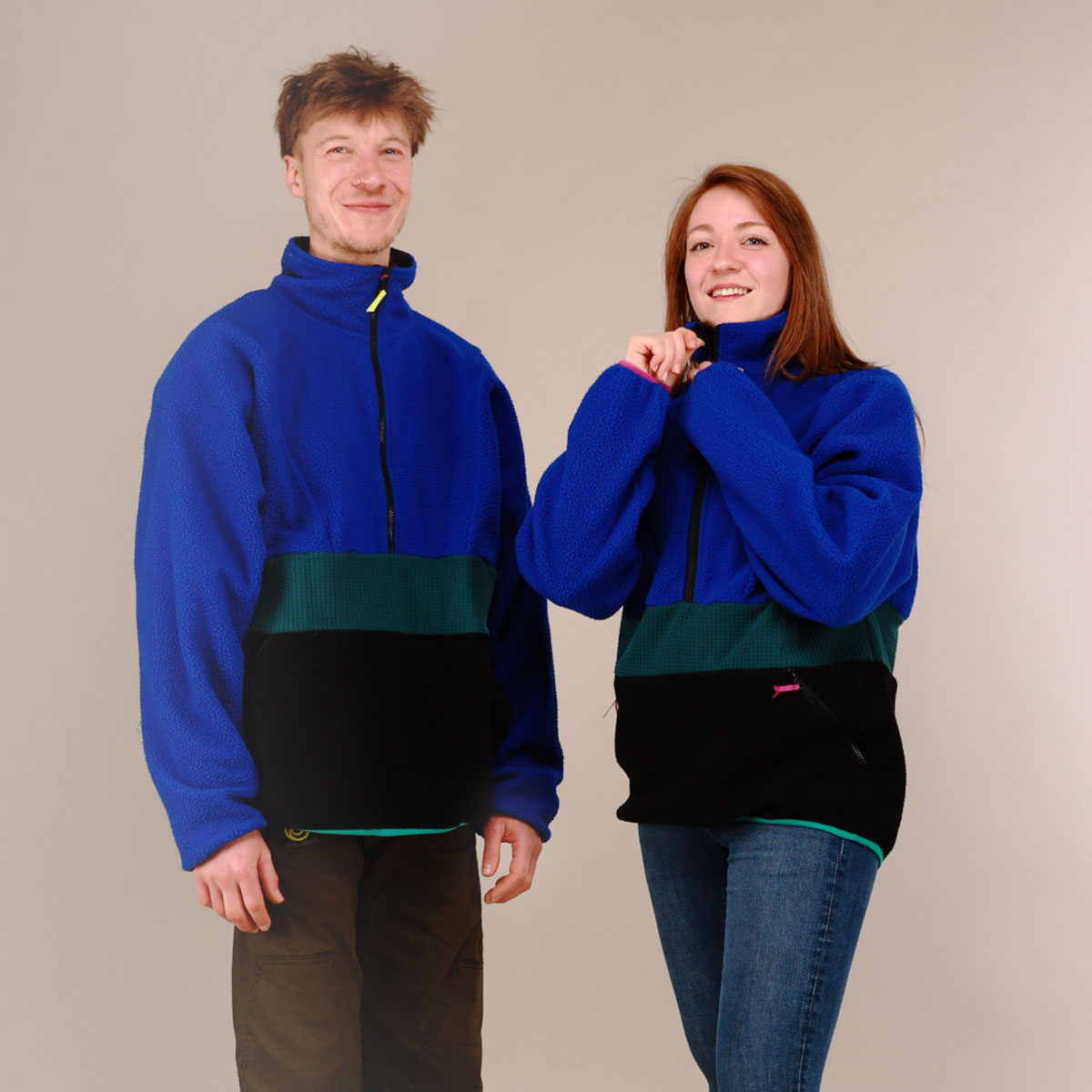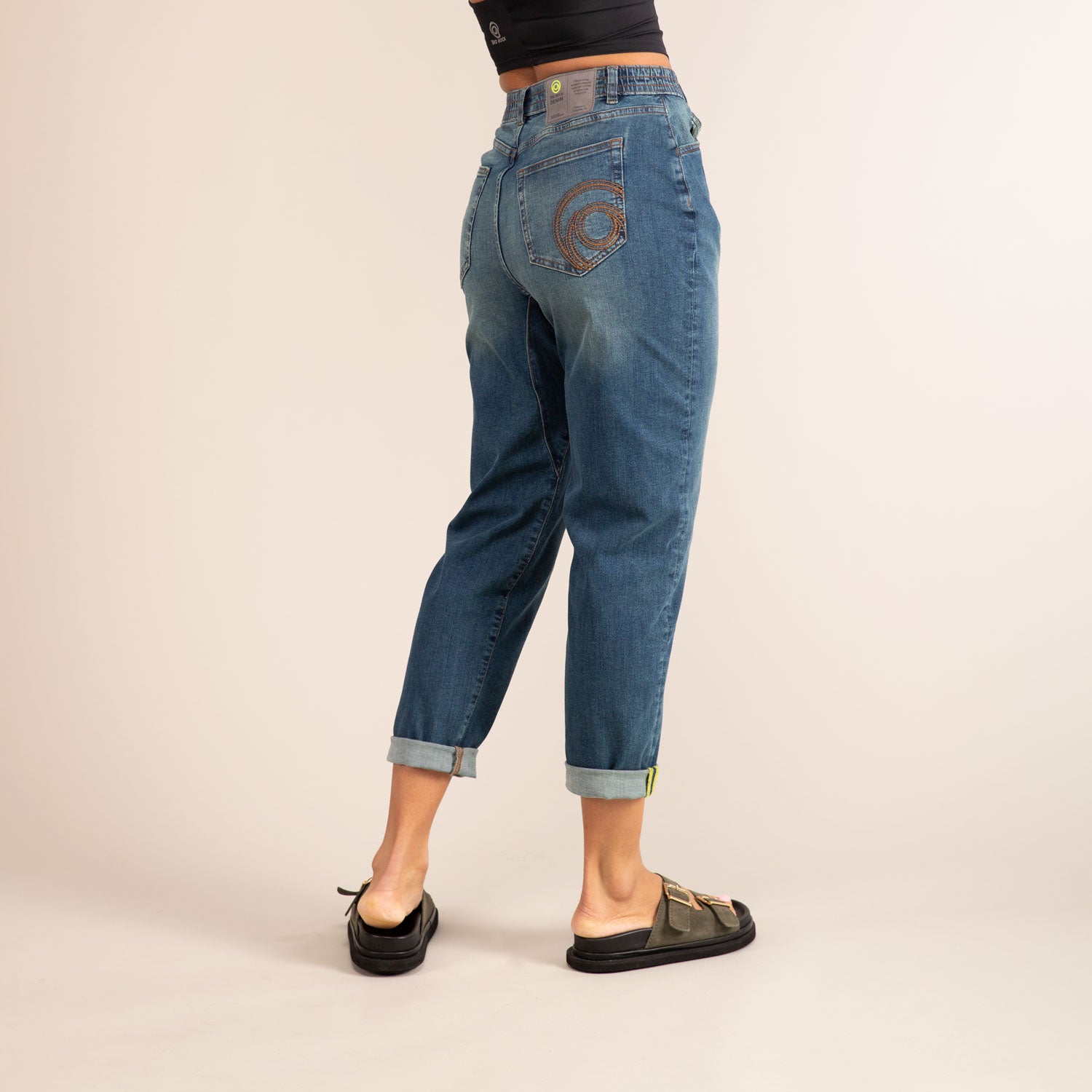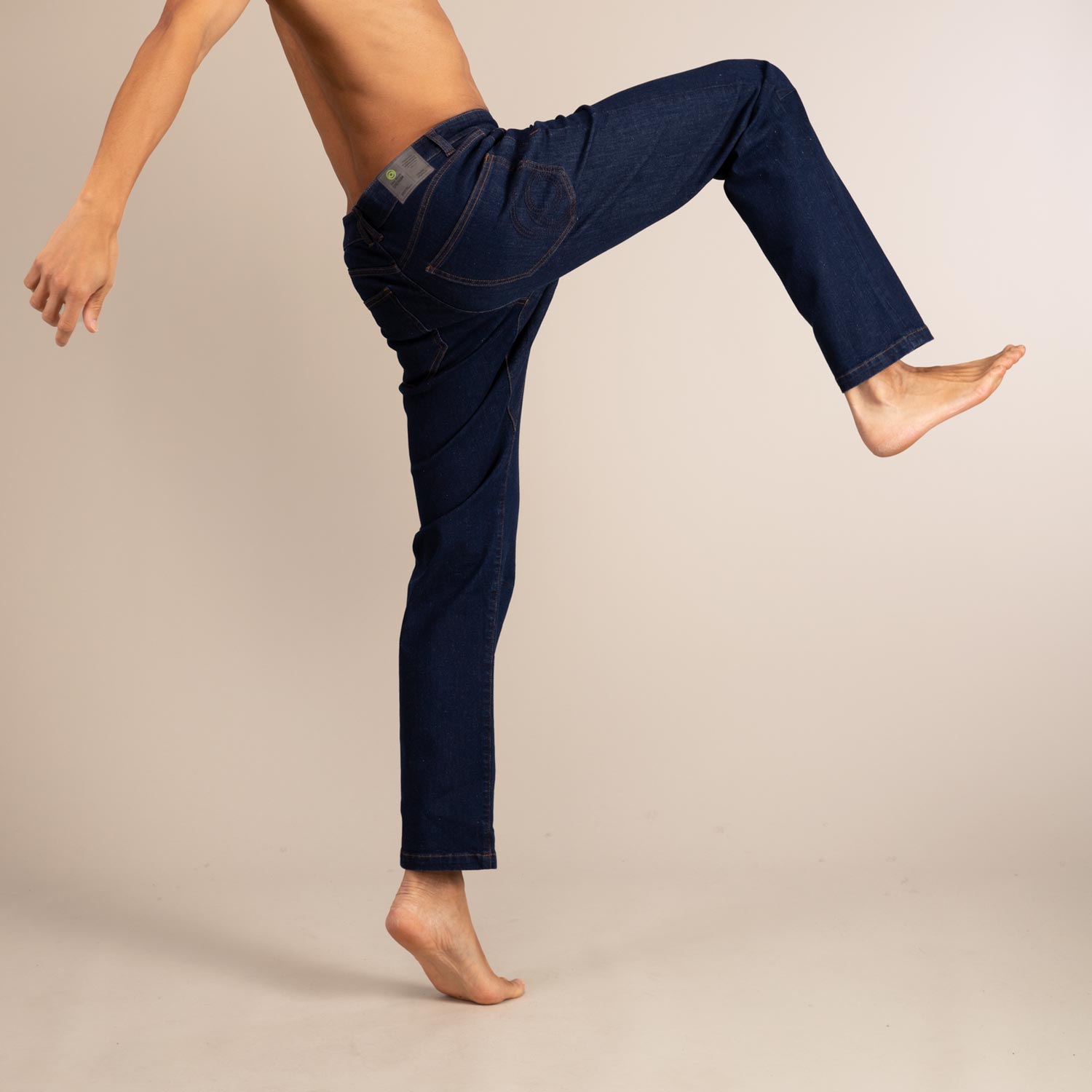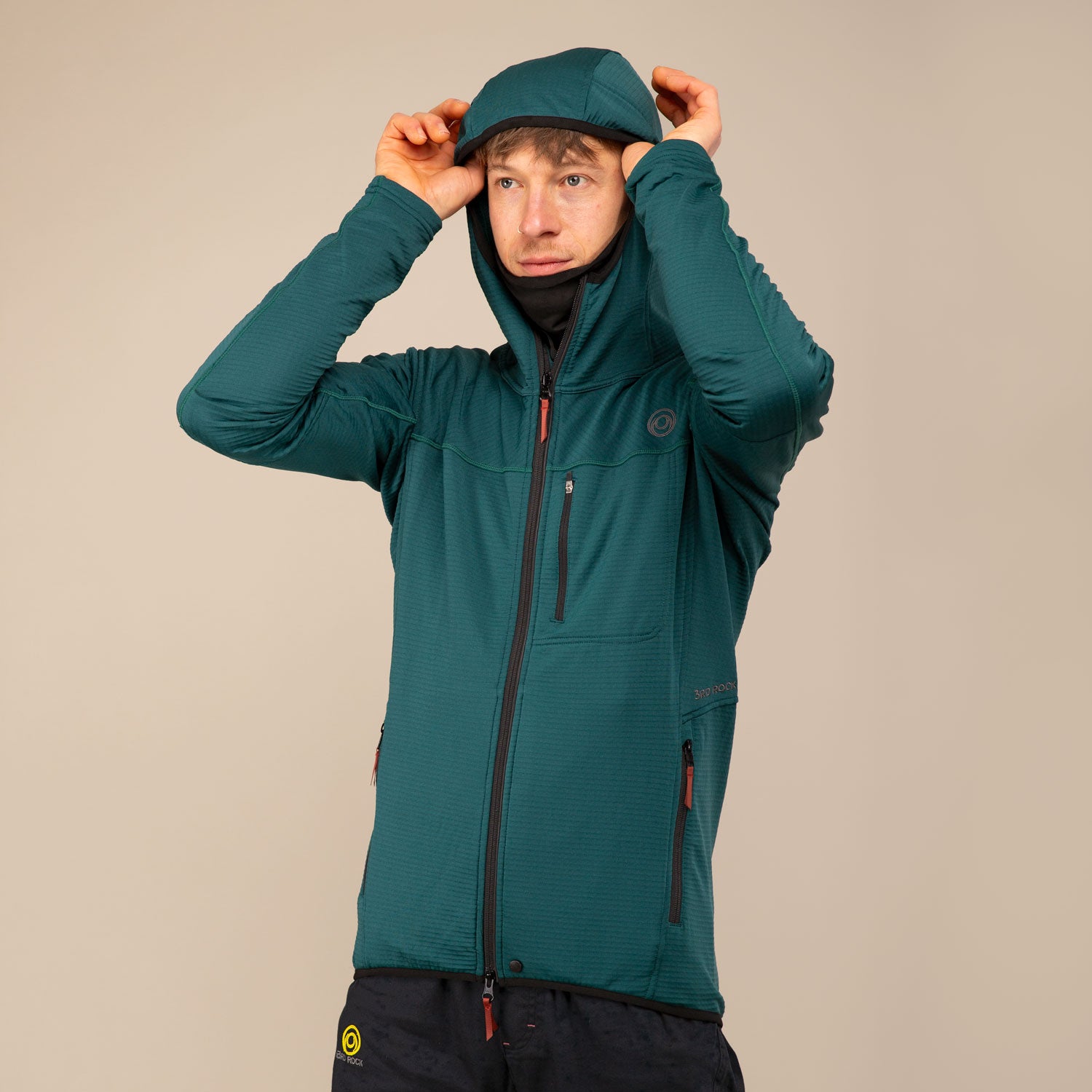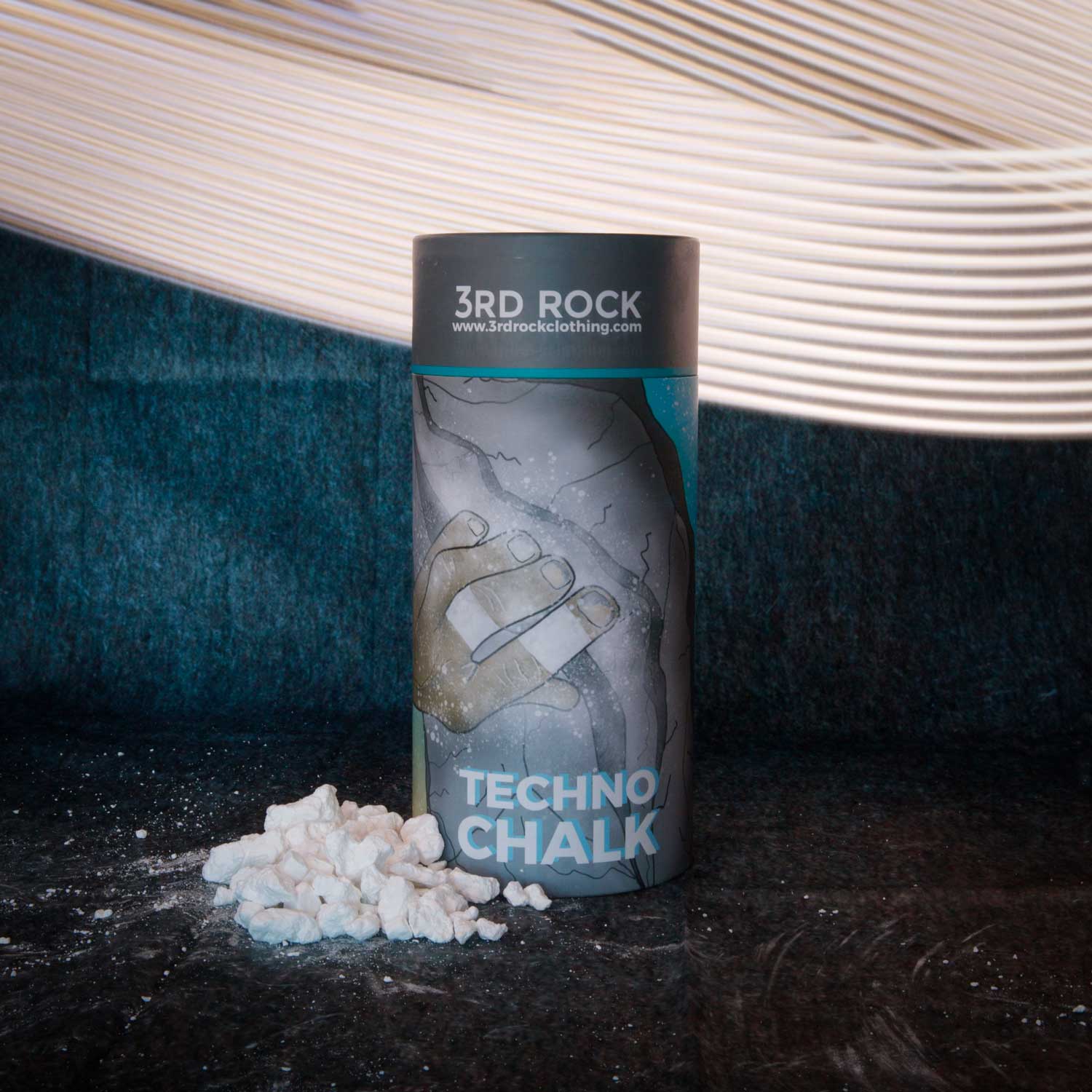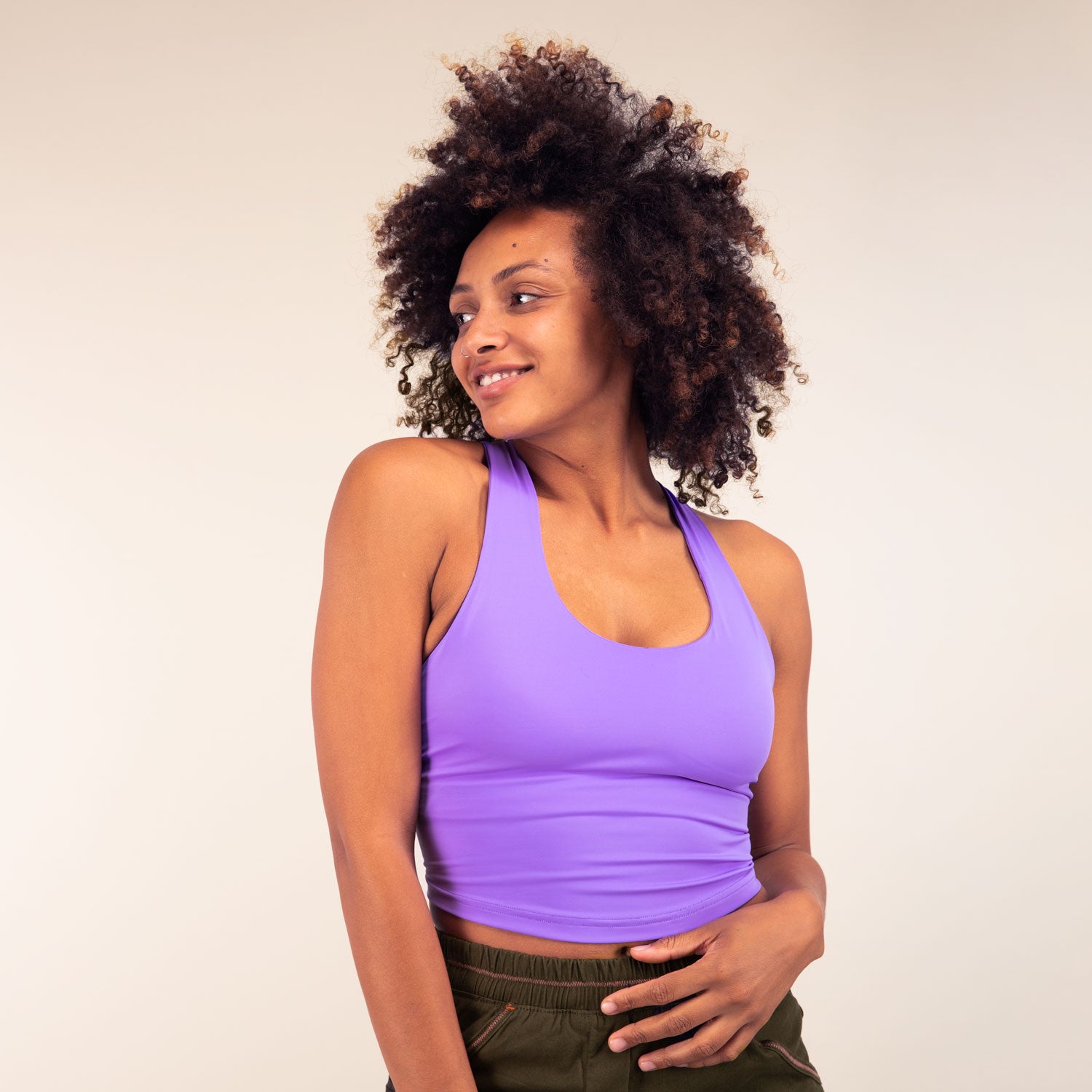Get Ready to Unearth the Truth: Sustainable Fashion 101! ✨🌿
Get Ready to Unearth the Truth: Sustainable Fashion 101!
Hey there fellow earth warriors! Ready for an in-depth conversation on sustainable fashion? Good! We''l try to avoid the technicaly malarkey, deal? Main thing to remember is: sustainability is a lifestlye, not a trend.
Now, excuse the anaology, but think of us as your sustainability sidekicks through this article - the Robin to your Batman if you will. We'll be guiding you through the labyrinth that is sustainable fashion, from decoding greenwashing (🤮) to understanding why sustainable fashion is more than a passing fancy.
So, that's enough of the overused metaphors. Grab a responsibly sourced snack, and join us in demystifying the world of sustainable fashion. Let's keep it real, let's keep it green!
So, what is sustainable fashion?
At its core, sustainable fashion is a commitment to harmonising style and ethics. Using materials like organic cotton and recycled polyester helps towards the bigger picture of reducing our impact and preserving our beautiful environment, one impeccably tailored garment at a time.
But, and there's always a 'but,' isn't there (one T, not two 😉)? The world of sustainable fashion isn't a utopia without its challenges, and navigating it comes with obstacles and challenges. From the perception that sustainable fashion is overpriced to the lack of availability, the path to a fully sustainable wardrobe certainly isn't easy. Yet, much like everything in life, these obstacles are just stepping stones towards the end goal - a more concious fashion industry.
One term that might ring a few bells is 'greenwashing.' It's the deceptive marketing strategy some brands use to appear more environmentally friendly than they truly are. Basically a Trojan horse, hiding all of it's nasty little secrets behind a pretty front (not always a giant wooden horse). To be a sustainable fashion warrior, you need to be equipped with the knowledge to discern the brands who really care from the Trojans.
Let's shine a light on brands that hold the sustainable fashion torch high in the sky. There are the Goliaths like Patagonia, Stella McCartney who are making other big brands take a long hard look in the mirror - and there are Davids, like us at 3RD ROCK, who aren't just following trends; but setting a new trajectory and sending a message: No matter how small you can have a responsibility. Both the Davids and the Goliaths exemplify the essence of sustainable fashion, showcasing that style and responsibility can indeed coexist.
It's crucial to understand the fabrics that go into sustainable fashion. Some, like organic cotton and Tencel, are the virtuosos of eco-friendliness, while others, like conventional cotton and synthetic fabrics, may leave a bigger carbon footprint. Each choice we make has it's consequences for our planet's health.
In conclusion, sustainable fashion is more than a trend; it's a cosmic shift in how we approach style. It's about being a conscious consumer & an advocate for ethical practices.
Why should you give a crap?
Okay, so why should you care about the sustainability of your wardrobe? Picture this: the fashion industry is like a fast-paced roller coaster, hurtling through trends and churning out clothes faster than you can say, "Is this still in style?" Unfortunately, this breakneck speed often means environmental and ethical corners are cut. But fear not, sustainable fashion is here to break the cycle!
By choosing sustainable fashion, you're saying "no more" to the pollution, the exploitation, and the disposable culture. It's like joining a rebellion, but instead of stormtroopers, you've got ethical fabrics and fair wages leading the charge.
Ever felt like the fashion industry was on a relentless roller coaster, speeding through trends and spitting out clothes faster than you could finish saying, "Is this still in style?" Brace yourself; you're not alone in this dizzying ride. The downside? This high-speed fashion extravaganza often tramples over environmental and ethical considerations. But here's the game-changer: sustainable fashion, the rebel with a cause!
Imagine this - the fashion industry as a wild roller coaster, careening through trends and spitting out garments at a speed that makes your head spin. Unfortunately, this breakneck pace often comes at the cost of environmental and ethical concerns. But fear not, because sustainable fashion is the rebel ready to break this cycle!
Choosing sustainable fashion is akin to declaring, "No more!" to the pollution, exploitation, and throwaway culture that has become synonymous with the fashion industry. It's like joining a rebellion, but instead of stormtroopers, you've got ethical fabrics and fair wages leading the charge.
But why should you care? Well, let's take a closer look at the perils of the mainstream fashion roller coaster. The breakneck speed of trends doesn't just leave you feeling dizzy; it wreaks havoc on the environment. Fast fashion is notorious for its colossal carbon footprint, devouring resources and contributing to pollution. From water-intensive cotton cultivation to the energy-guzzling production processes, each garment adds to the ecological toll.
And it's not just the environment that takes a hit; it's the people behind the scenes too. The fashion industry, in its haste to keep up with trends, often turns a blind eye to ethical considerations. Sweatshops and exploitative labour practices lurk in the shadows of the runway, hidden behind the glitter and glam. But sustainable fashion brings these issues into the spotlight, championing fair wages and humane working conditions.
Choosing sustainable fashion is a conscious decision to opt out of the destructive cycle. It's a rebellion against the throwaway culture that has normalised discarding clothes after a few wears. Sustainable fashion encourages a shift toward quality over quantity, urging consumers to invest in pieces that stand the test of time.
So, when you choose sustainable fashion, you're not just picking out a garment; you're making a statement. It's a declaration that your style choices won't come at the expense of the planet or the people who craft those fabulous threads. It's a revolutionary act that aligns fashion with a commitment to a greener, fairer future.
In essence, sustainable fashion is the antidote to the dizzying ride of mainstream trends. It's a conscious choice to slow down, consider the impact of each purchase, and embrace a wardrobe that resonates with values beyond mere aesthetics. So, step off the fashion roller coaster and join the sustainable style revolution. Your wardrobe—and the world—will thank you for it.
"We don't need 1000 pefect environmentalists, we need 100 imperfect ones"
~ A quote from Alice from Surfers Against Sewage. Read/Watch our discussion with her here.
The Nitty-Gritty: What's the difference?
Alright, let's tackle the confusion around sustainable, ethical, and eco-friendly—because, let's face it, it's a jungle out there. Sustainable fashion is the umbrella term that covers a spectrum of eco-conscious practices. It's like a buffet of goodness where you can pick and choose your favourite planet-loving flavours.
-
Ethical Fashion: This star of the show ensures fair treatment of the folks who create your wardrobe. Think fair wages, safe working conditions, and a collective high-five to human rights.
-
Eco-Friendly Fashion: This one is all about materials. Eco-friendly fashion minimises its environmental footprint by using planet-loving fabrics, reducing water usage, and sidestepping toxic chemicals.
-
Circular Fashion: Imagine fashion that never says goodbye. Circular fashion is about creating a loop where clothes are recycled, upcycled, or biodegraded, avoiding the tragic fate of a landfill.
In the sprawling fashion landscape, deciphering terms like sustainable, ethical, and eco-friendly can feel like venturing into an untamed jungle. Let's wield our machetes of clarity and explore the tangled vines of fashion jargon. At the heart of this wilderness lies the distinction between fast fashion and sustainable fashion—a critical choice that goes beyond trends and threads.
Fast fashion, the reigning monarch of the fashion jungle, operates on a relentless cycle of trends. It's the high-speed roller coaster hurtling through styles, bringing new collections to the shelves faster than you can say "What's next?" This breakneck pace comes at a cost: a hefty environmental toll and ethical compromises. The rapid turnover encourages a culture of disposability, where garments are worn a handful of times before being discarded like yesterday's news.
Now, let's journey to the more serene side of the jungle—sustainable fashion. Picture it as an oasis of conscious choices, a haven where ethical practices and eco-friendly materials flourish. Sustainable fashion is the umbrella term that covers a spectrum of planet-loving practices, offering a buffet of goodness for conscientious consumers.
The key difference lies in the approach to production. Fast fashion thrives on speed and mass production, churning out garments in colossal quantities. This leads to a staggering environmental footprint—excessive water usage, energy consumption, and mountains of textile waste. The allure of low prices conceals the true cost paid by the environment and the people in the production chain, often subjected to exploitative labor conditions.
In contrast, sustainable fashion takes a deliberate, considered approach. It prioritises eco-conscious materials, embraces ethical production practices, and encourages longevity in garment lifespan. Slow fashion, a subset of sustainable fashion, advocates for quality over quantity. It challenges the notion that trends must dictate our wardrobe choices, promoting pieces that withstand the test of time both in style and durability.
Why does it matter which path we tread in this fashion jungle? The environmental impact is colossal. Fast fashion is a major contributor to pollution, deforestation, and climate change. The excessive use of water, chemicals, and nonrenewable resources exacts a heavy toll on ecosystems. Additionally, the disposable nature of fast fashion perpetuates a cycle of overconsumption, leading to overflowing landfills and a throwaway culture.
On the flip side, choosing sustainable fashion is a conscious step toward minimising harm. It supports responsible production methods, encourages fair treatment of workers, and contributes to a circular economy by reducing waste. It's a choice that aligns personal style with ethical and environmental values—a departure from the chaotic frenzy of fast fashion.
As we navigate the fashion jungle, it's essential to equip ourselves with knowledge and make choices that resonate with our values. Sustainable fashion isn't just a trend; it's a movement that challenges the status quo, offering a path to a more conscious and harmonious relationship with our planet. Choose your fashion journey wisely—it's not just about what you wear; it's about the world you shape with your choices.
The sneaky culrprit: Greenwashing
Now, let's talk about greenwashing. It's the crafty marketing ploy some brands use to pretend they're eco-warriors when, in reality, they might be more of an eco-poser. It's like a wolf in sheep's clothing, but less stylish. Greenwashing is when a brand slaps a few leaves on their logo and calls it a day, pretending to be more sustainable than a solar-powered rainbow. The EU has recently started clamping down on Greenwashing.
Demystifying Greenwashing: More Than Just Leaves on a Logo
In the vast landscape of sustainability, greenwashing lurks like a chameleon, camouflaging itself as an eco-friendly champion while concealing a less virtuous reality. This crafty marketing ploy is akin to a wolf donning sheep's clothing—deceptive, and, let's face it, not very stylish. Greenwashing occurs when brands engage in misleading practices to portray an illusion of environmental responsibility, duping consumers into believing they're supporting a more sustainable choice.
Imagine a scenario: a brand hastily slaps a few leaves on its logo, uses buzzwords like "eco-friendly" or "green," and voila, they're now a beacon of environmental virtue, right? Not so fast. Greenwashing is the act of capitalising on the growing demand for sustainable products without making substantive changes to business practices. It's a smokescreen that obscures the true impact of a brand's operations on the planet.
One common tactic in the greenwashing playbook is the use of vague and unverifiable claims. Phrases like "all-natural" or "eco-conscious" might sound promising, but without concrete evidence or third-party certifications, they're nothing more than empty promises. It's the eco-equivalent of smoke and mirrors, designed to distract from less-than-planet-friendly practices.
Another classic greenwashing move is the strategic emphasis on a single eco-friendly aspect while conveniently sidestepping less flattering details. For instance, a clothing brand might proudly highlight the use of organic cotton while conveniently neglecting to mention exploitative labor practices or excessive packaging. It's a selective narrative that paints an incomplete picture, diverting attention from the broader environmental and ethical landscape.
The rise of greenwashing is fueled by the increasing consumer demand for sustainable products. As eco-consciousness becomes a driving factor in purchasing decisions, brands are compelled to portray themselves as stewards of the environment, regardless of the substance behind the claims. It's a game of perception, and in this age of information, consumers hold the power to discern authenticity from mere greenwashing.
So, why does greenwashing matter, and what's at stake? At its core, greenwashing undermines genuine efforts toward sustainability. It dilutes the impact of authentic eco-friendly practices by allowing less scrupulous brands to ride the green wave without contributing meaningfully to environmental conservation. Consumers, misled by false claims, might unknowingly support businesses that prioritise profit over our planet.
Combatting greenwashing requires a discerning eye and a commitment to transparency. Look beyond surface-level eco-labels and demand verifiable evidence of a brand's sustainability efforts. Third-party certifications from reputable organisations can serve as a reliable litmus test. Remember, a truly sustainable brand will be forthcoming about its practices, willingly providing details about its entire supply chain and the steps taken to reduce its environmental footprint.
In a world awash with green-themed marketing, the responsibility lies with consumers to cut through the greenwashing haze. By staying informed and holding brands accountable, we can collectively ensure that the journey toward sustainability is genuine and impactful. So, next time you encounter a brand touting its green credentials, dig a little deeper—because in the fight against greenwashing, knowledge is your most potent weapon.
Examples of sustainable fashion
Alright, enough with the jargon. Let's get down to the fun part—showcasing some fashion heroes. Brands like Patagonia, Stella McCartney, and yes, yours truly, 3RD ROCK are champions of sustainable fashion. Whether it's using recycled materials, embracing circular practices, or ensuring fair working conditions, us & other brands are setting the standard for the future of fashion.
Fashion Heroes: Pioneering the Sustainable Revolution
In the fast-paced world of fashion, where trends come and go like fleeting seasons, a cadre of fashion heroes is emerging, challenging the status quo and championing the cause of sustainability. These brands, including illustrious names like Patagonia, Stella McCartney, and the eco-trailblazer 3RD ROCK, are not just crafting garments; they're weaving a narrative of conscious fashion that transcends fleeting trends.
Patagonia: A Trailblazer in Eco-Innovation
Patagonia stands as a formidable force in the realm of sustainable fashion. With a commitment to environmental activism, the brand has pioneered the use of recycled materials in its products, transforming discarded plastic bottles into high-performance outdoor gear. Their "Worn Wear" initiative encourages customers to embrace a culture of repair and reuse, extending the lifespan of their garments and diverting them from landfills.
Stella McCartney: Where Luxury Meets Sustainability
Stella McCartney has redefined luxury fashion by seamlessly integrating sustainability into its DNA. Known for her cruelty-free approach to fashion, McCartney eschews the use of leather and fur, opting for innovative, plant-based materials. The brand actively engages in circular fashion practices, prioritising durability and repairability, and is a vocal advocate for a more sustainable and compassionate industry.
3RD ROCK: Scaling New Heights in Ethical Activewear
In the realm of climbing and activewear, 3RD ROCK emerges as a beacon of ethical practices and sustainable style. Beyond crafting high-performance garments, 3RD ROCK prioritises fair working conditions and transparent supply chains. With a commitment to using eco-friendly materials, the brand's products, such as the Alex Fleece and Luna Bra, showcase that fashion can be both functional and kind to the planet.
These fashion heroes share a common thread—they recognize that the fashion industry's future hinges on embracing sustainability. From using organic and recycled materials to adopting circular practices, they serve as inspirations for an industry in dire need of transformation.
The 3RD ROCK Difference: Navigating the Peaks of Sustainability
3RD ROCK's ethos extends beyond creating fashionable activewear; it's about redefining industry standards. The brand's unisex Alex Fleece, crafted from recycled polyester, exemplifies their commitment to using innovative, sustainable materials. Moreover, 3RD ROCK's dedication to fair wages and ethical manufacturing ensures that every garment tells a story of conscientious creation.
Alice from Surfers against sewage explaining how the fashion industry affects our ocean's health.
Joining the revolution: Why it matters
The prominence of these fashion heroes signifies a broader shift in consumer consciousness. As more individuals prioritise sustainability in their purchasing decisions, these brands are not just creating clothes; they're shaping a movement. By supporting such brands, consumers become active participants in a revolution that challenges the conventional, wasteful norms of the fashion industry.
In essence, these fashion heroes embody the idea that fashion can be a force for positive change. They prove that style and sustainability are not mutually exclusive; rather, they are powerful allies capable of transforming an industry notorious for its environmental and ethical shortcomings.
So, the next time you're perusing your wardrobe or contemplating a fashion purchase, consider aligning with these fashion heroes. After all, it's not just about what you wear; it's about the impact your choices make on the planet and the future of fashion. Join the revolution, where style meets substance, and fashion becomes a catalyst for change.
Sutainable materials face-off: The best vs the worst
Not all fabrics are created equal when it comes to sustainability. Some, like organic cotton, Tencel, and recycled polyester, are the MVPs of eco-friendliness. Others, like conventional cotton and synthetic fabrics, might make you cringe a bit once you know their environmental baggage.
Embarking on a sustainability journey in the world of fashion involves navigating through a fabric labyrinth. The choices we make regarding materials have profound implications for the planet, determining the environmental footprint of our garments. In this fabric face-off, let's unravel the intricacies and explore the champions and challengers in the realm of sustainability.
Champion Fabrics: A Symphony of Eco-Friendliness
Organic Cotton: Standing tall as the poster child of sustainable textiles, organic cotton is grown without synthetic pesticides or fertilizers. Embracing a more holistic and natural cultivation process, it minimizes harm to the environment, prioritizing soil health and biodiversity. Garments crafted from organic cotton bear the badge of an environmentally conscious choice. Read our blog post on Organic cotton vs conventional cotton.
Tencel (Lyocell): A rising star in sustainable fashion, Tencel, derived from sustainably sourced wood pulp, represents a harmonious fusion of comfort, style, and eco-friendliness. The closed-loop production process ensures minimal waste, and the resulting fabric is known for its breathability and softness.
Recycled Polyester: Breathing new life into discarded plastic bottles, recycled polyester epitomizes the transformative power of recycling. By diverting plastic waste from landfills and oceans, this material reduces the demand for virgin polyester production. From activewear to everyday garments, recycled polyester is steering the fashion industry towards circularity.
Challenger Fabrics: The Eco-Question Marks
Conventional Cotton: Despite its ubiquity, conventional cotton comes with a heavy environmental toll. Its cultivation often involves intensive use of pesticides and chemical fertilizers, contributing to soil degradation and water pollution. The thirst for water in cotton farming further exacerbates its ecological impact, making it a less-than-ideal choice for the eco-conscious consumer.
Synthetic Fabrics: Polyester, nylon, and other synthetic fabrics, while durable and versatile, have a dark side. Derived from petrochemicals, the production of these materials is energy-intensive and contributes to greenhouse gas emissions. Moreover, the shedding of microfibers during washing poses a threat to aquatic ecosystems, adding another layer to their environmental concerns.
Navigating this fabric odyssey involves a conscious evaluation of the materials we embrace. By choosing the MVPs of eco-friendliness—organic cotton, Tencel, and recycled polyester—we contribute to a fashion landscape that treads lightly on the planet. Conversely, understanding the environmental baggage of conventional cotton and synthetic fabrics empowers us to make informed choices that align with a more sustainable future.
In the grand tapestry of sustainable fashion, our fabric choices weave a narrative of responsibility and resilience. So, the next time you slip into a garment, consider the story it tells—the tale of a conscious consumer navigating the fabric landscape, one eco-friendly choice at a time.
What makes it tricky: The limitations of sustainable materials
Now, let's address the elephant in the sustainable room—challenges. While the vision is clear, the path to fully sustainable fashion has a few bumps. From the higher price tag to the limited variety, navigating this road isn't always a breeze. But hey, Rome wasn't built in a day, and neither will your sustainable wardrobe.
Embarking on the journey towards sustainable fashion is akin to setting sail on uncharted waters. The destination—ecologically conscious and ethically produced clothing—is crystal clear, but the path is laden with challenges and bumps. Let's dive into the complexities and limitations that cast shadows on the sunny landscape of sustainable fashion.
1. The Price Tag Predicament
One of the glaring challenges on the road to sustainability is the often higher price tag attached to eco-friendly garments. Sustainable materials, ethical production practices, and fair wages contribute to the elevated cost of these fashion gems. For consumers accustomed to the allure of fast fashion's budget-friendly offerings, this shift in price dynamics can be a stumbling block. However, it's crucial to view this as an investment—a contribution to a more equitable and sustainable fashion industry.
2. The Limited Variety Conundrum
Sustainable fashion, in its current evolution, might not boast the same expansive variety as its conventional counterpart. The palette of available styles, colors, and designs can sometimes seem limited. The fashion industry's pivot towards sustainability is an ongoing process, and as it gains momentum, the array of choices is likely to expand. Patience becomes the virtue that paves the way for a wardrobe that aligns with both style and sustainability.
3. The Constant Flux of Trends
In a fashion landscape that thrives on the ephemeral nature of trends, creating a sustainable wardrobe poses a unique challenge. Fast fashion entices consumers with rapidly changing styles, encouraging a culture of disposability. Sustainable fashion, rooted in durability and timeless design, challenges this paradigm. Embracing longevity over transience becomes a paradigm shift—one that demands a departure from the trend-chasing mindset.
4. The Education Gap
Navigating the nuances of sustainable fashion requires a level of awareness that isn't always readily available. Understanding the environmental and ethical implications of materials, production processes, and certifications can be overwhelming. Bridging the education gap becomes a collective responsibility, necessitating efforts from both brands and consumers to foster a culture of informed decision-making.
While these challenges might cast shadows on the journey towards sustainable fashion, they are not insurmountable. The higher price tag reflects the true cost of responsible production, limited variety invites a shift towards mindful consumption, and the constancy of trends finds its counterbalance in timeless design. The roadmap to sustainable fashion may have its twists and turns, but each step taken brings us closer to a wardrobe that harmonizes with the well-being of our planet and its people.
What can you do as an individual?
You, yes you, have the power to make a difference! Embrace the slow fashion movement by choosing quality over quantity. Vote with your wallet and support brands that align with your values, and don't be afraid to ask questions about their practices.
Mend, swap, and donate your clothes instead of tossing them into the abyss (or those “recycling” bins at H&M 👀). Little by little, your choices add up, creating a ripple effect that transforms the fashion landscape.
Empowering Change: Your Role in the Sustainable Fashion Revolution
In the vast realm of fashion, where trends come and go like passing seasons, your choices as an individual wield profound influence. The sustainable fashion movement beckons, and you, the conscious consumer, are a key player in shaping its trajectory. So, what can you do to champion the cause and make a tangible difference?
1. Embrace the Slow Fashion Philosophy
In a world accustomed to the rapid turnover of trends, embracing the slow fashion philosophy becomes a revolutionary act. Opt for quality over quantity—invest in timeless pieces that transcend fleeting trends. Slow fashion encourages a shift from impulse-driven purchases to thoughtful acquisitions, fostering a connection between you and your wardrobe that stands the test of time.
2. Vote with Your Wallet
The power of your purchase extends far beyond the transactional moment. Every time you open your wallet to support a brand, you cast a vote for the kind of fashion industry you want to see. Choose brands that align with your values—ones committed to sustainable practices, ethical production, and transparency. By endorsing eco-conscious companies, you contribute to the momentum propelling the entire fashion landscape towards a greener future.
3. Inquire and Advocate
Don't be afraid to ask questions. In a world inundated with marketing jargon, seek transparency about a brand's sustainability practices. Inquiring about materials, production processes, and certifications cultivates a culture of accountability. Your curiosity sends a powerful message that consumers demand and appreciate honesty and sustainability.
4. Mend, Swap, and Donate
The lifespan of your garments extends beyond their initial purpose. Instead of consigning them to the depths of a landfill (or the illusionary "recycling" bins), consider mending, swapping, or donating. This approach fosters a circular fashion economy, where garments find new life and purpose. Participate in clothing swaps with friends, explore local thrift stores, and, when it's time to part ways, donate to ensure your clothes continue their journey.
5. Educate and Advocate
Become an ambassador for sustainable fashion by educating those around you. Share your knowledge about the environmental and ethical implications of fast fashion, inspiring others to join the movement. Your influence creates a ripple effect, as friends and family become conscious consumers, collectively steering the industry towards a more sustainable future.
In the grand tapestry of fashion, your role as an individual is not passive but transformative. Your choices, whether in the garments you choose or the questions you ask, contribute to a larger narrative of change. As you navigate the fashion landscape, remember: you are not just a consumer; you are a catalyst for a fashion revolution that values the planet and its people.
So, there you have it—a cheeky, not-so-technical guide to sustainable fashion. Now, armed with this knowledge, go forth and conquer the world with your sustainable style! 🌎💚
Shop our sustainability staples
Apr 02, 2024



